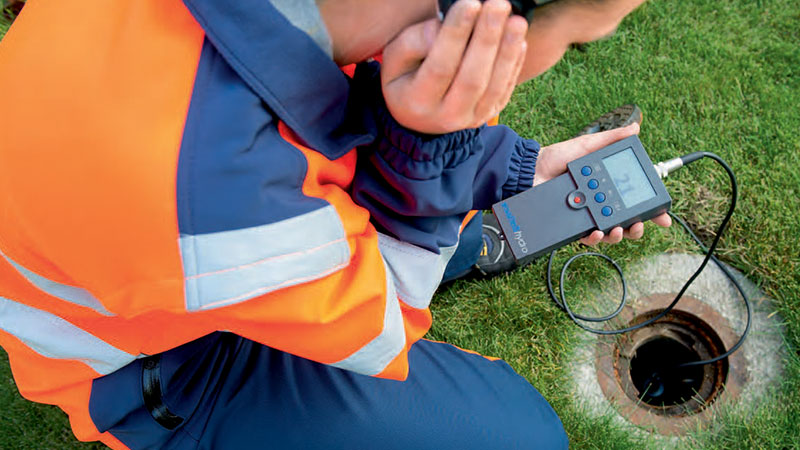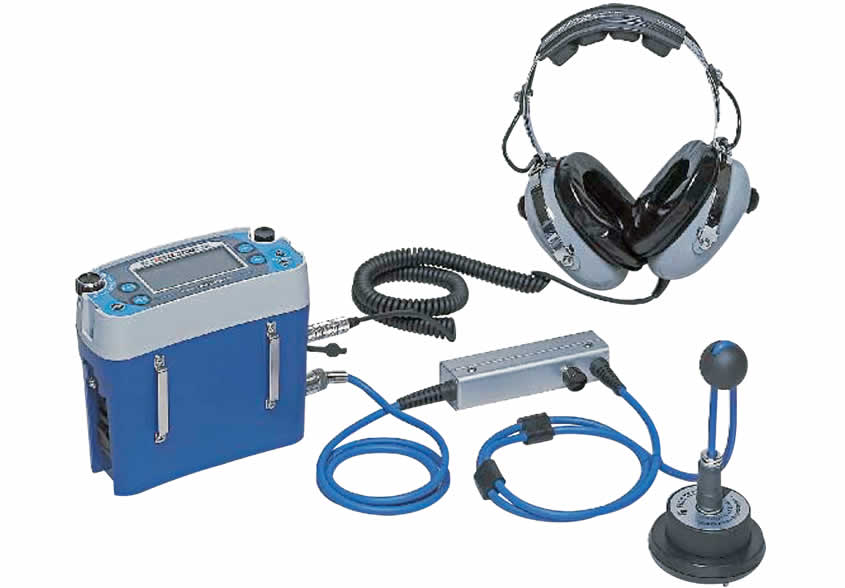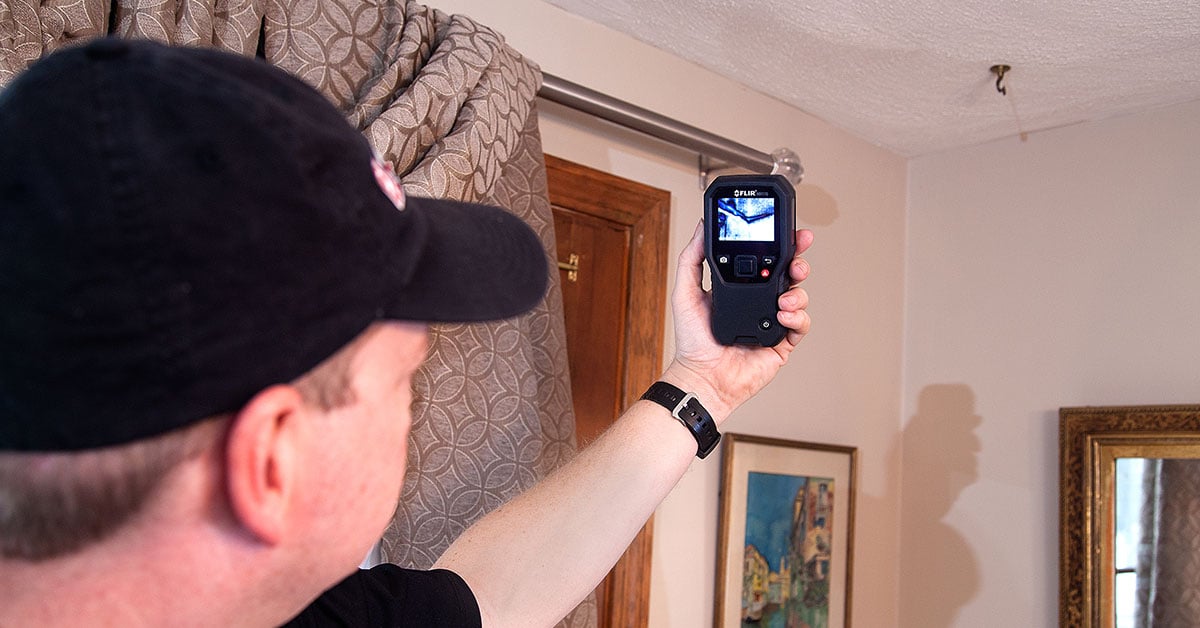Exactly How Specialist Water Leak Detection Can Conserve You Money and Avoid Damage
Exactly How Specialist Water Leak Detection Can Conserve You Money and Avoid Damage
Blog Article
Ingenious Solutions for Early Discovery of Water Leaks in Structures and Infrastructure
From advanced leakage detection technologies to the implementation of IoT sensing units for real-time surveillance, the landscape of leakage avoidance is advancing rapidly. Automated water circulation evaluation systems are improving just how leakages are identified and dealt with, paving the method for a positive method to water leak detection.
Advanced Leakage Discovery Technologies
Advanced leak discovery modern technologies, outfitted with advanced sensors and algorithms, play an important role in swiftly recognizing and determining water leakages in different settings. These modern technologies use a combination of acoustic, thermal, and electro-magnetic noticing approaches to spot leaks properly. Acoustic sensors discover the audio of leaving water, enabling accurate localization of the leak resource. Thermal imaging spots temperature modifications brought on by water leak, supplying another efficient approach for leakage recognition. Electromagnetic sensors can determine adjustments in magnetic fields brought on by water, supplying yet one more layer of leakage discovery capacity.

IoT Sensors for Real-Time Tracking
In the realm of contemporary water leakage discovery, the assimilation of IoT sensors for real-time surveillance represents a critical development in improving aggressive leakage discovery capacities. These sensing units offer continual monitoring of water supply, giving real-time information on water circulation prices, stress variants, and temperature changes. By leveraging IoT technology, these sensors can discover even the smallest anomalies in water usage patterns, enabling early recognition of possible leakages prior to they intensify into major issues.
IoT sensors transmit data to a central system, where sophisticated algorithms evaluate the information and create alerts or alerts when irregularities are spotted. This real-time tracking capability enables homeowner or center supervisors to quickly deal with leaks, decreasing water damages, reducing repair prices, and preserving water resources.
Furthermore, IoT sensing units can be incorporated with building monitoring systems, permitting automated responses to identified leakages, such as shutting down water shutoffs or activating pumps to minimize the effect of leaks. Overall, the execution of IoT sensors for real-time monitoring substantially improves the efficiency and performance of water leakage detection in structures and infrastructure.
Artificial Intelligence Algorithms for Leak Forecast

One key advantage of making use of maker knowing for leakage forecast is its ability to continually discover and enhance its accuracy with time. As more information is gathered and fed right into the algorithm, it can refine its forecasts and adapt to changing problems, eventually increasing the dependability of leak detection systems.
Moreover, maker learning algorithms can aid in recognizing subtle indicators of leaks that may go undetected try these out by conventional surveillance methods. water leak detection. By examining complicated information sets in real-time, these algorithms can give early cautions and alerts, permitting prompt treatment and precautionary upkeep to reduce prospective water damages and associated expenses
Making Use Of Thermal Imaging for Leak Discovery
Thermal imaging innovation uses a promising method for identifying water leaks in different systems and facilities. By making use of infrared radiation and temperature variations, thermal imaging cams can recognize hidden leaks that are not quickly noticeable to the nude eye. When water runs away from pipelines or frameworks, it often changes the temperature of the surrounding location, producing temperature level differentials that thermal electronic cameras can catch. These temperature level irregularities are then converted right into visible images, highlighting the precise area of the leak.
Among the vital benefits of thermal imaging for leakage detection is its non-intrusive nature. Unlike conventional techniques that might need getting into wall surfaces or floorings to locate leaks, thermal imaging allows for non-destructive screening. This not only conserves time and minimizes expenses however also minimizes disturbance to the structure or facilities being evaluated. Additionally, thermal imaging can quickly scan huge areas, offering an extensive overview of possible leak sources in a prompt manner. Overall, making use of thermal imaging innovation enhances the performance and precision of water leak discovery, making it a useful tool for keeping the stability of buildings and frameworks.
Automated Water Flow Analysis Equipments
Exactly how can computerized water flow evaluation systems transform the discovery and monitoring of leaks in numerous systems and facilities? Automated water circulation analysis systems use a proactive technique to leakage detection by continuously monitoring water flow prices and patterns. By establishing baseline information, these systems can quickly determine inconsistencies that may indicate a leakage, making it possible for prompt treatment to avoid substantial see here damages.
These systems make use of advanced algorithms to analyze real-time information and offer immediate informs when anomalies are detected, allowing for quick action to be taken. In addition, computerized water flow analysis systems can be integrated with building administration systems or IoT systems, boosting general performance and enabling remote monitoring capabilities.
Furthermore, the data collected by these systems can be made use of for anticipating upkeep objectives, aiding to recognize prospective powerlessness in the facilities before leaks take place. Generally, the execution of automatic water flow analysis systems can why not check here considerably improve leakage discovery and administration methods, inevitably bring about set you back savings, reduced water wastefulness, and boosted sustainability in structures and infrastructure.

Verdict
In final thought, the assimilation of innovative leakage discovery modern technologies, IoT sensing units, artificial intelligence algorithms, thermal imaging, and automatic water flow analysis systems provides ingenious services for early detection of water leakages in structures and framework. These modern technologies make it possible for real-time surveillance, forecast of leaks, and efficient detection approaches to protect against water damages and waste. Executing these options can assist in maintaining the integrity and sustainability of water supply in numerous settings.
Report this page